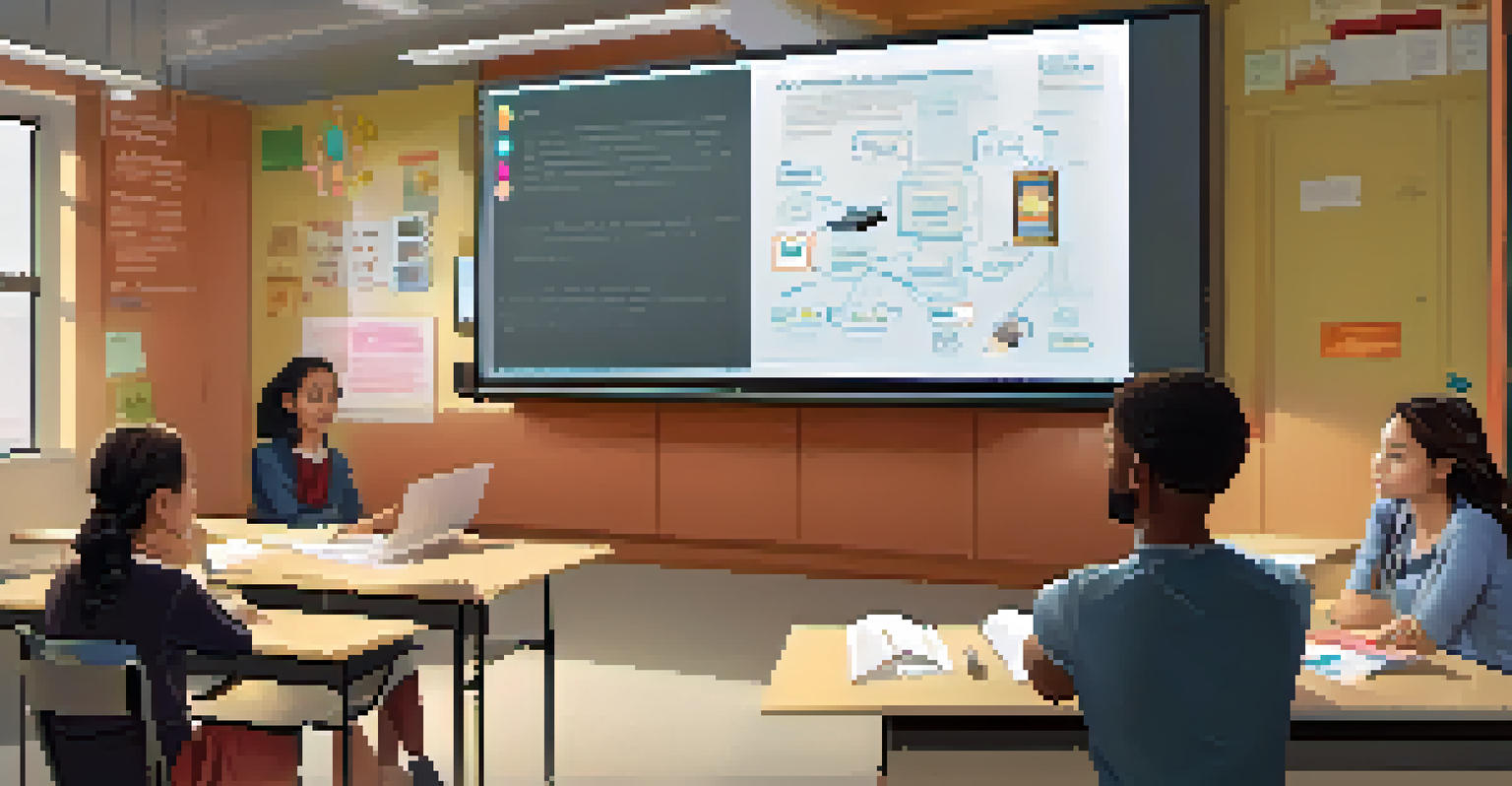Creating a Collaborative Culture in Learning Spaces

Understanding the Importance of Collaboration in Learning
Collaboration in learning spaces is essential for fostering creativity and critical thinking. When learners engage with one another, they share diverse perspectives that enrich the educational experience. This interaction not only enhances understanding but also builds essential social skills that are invaluable in both academic and real-world settings.
Alone we can do so little; together we can do so much.
Imagine a group project where each student brings their unique strengths to the table. One might excel in research, another in presentation skills, and yet another in creative thinking. By collaborating, they can produce a final project that is greater than the sum of its parts, illustrating how teamwork can lead to outstanding results.
Moreover, collaborative learning promotes a sense of community among students. When learners feel they are part of a team, they are more likely to participate actively, take risks, and support each other, leading to a richer and more fulfilling educational experience.
Creating Physical Spaces that Encourage Collaboration
The design of a learning space plays a pivotal role in promoting collaboration. Flexible seating arrangements, such as movable desks or communal tables, allow students to easily group together and engage in discussions. This kind of environment encourages spontaneous collaboration and makes it easier for learners to connect with one another.

Consider classrooms with designated areas for group activities, such as breakout rooms or collaborative zones. These spaces can be equipped with whiteboards, projectors, and other resources that facilitate teamwork. By providing the right tools and environment, educators can inspire students to work together more naturally.
Collaboration Enhances Learning
Working together allows students to share diverse perspectives and develop critical social skills.
Additionally, incorporating technology, like interactive screens or shared digital platforms, can further enhance collaboration. Students can brainstorm ideas in real time, share resources, and provide feedback instantly, making collaboration not just a physical activity but a digital one as well.
Fostering an Inclusive Atmosphere for All Learners
To create a truly collaborative culture, it’s vital to foster inclusivity. This means recognizing and valuing the diverse backgrounds and perspectives that each student brings to the table. When learners feel respected and safe to express their ideas, collaboration flourishes.
Collaboration allows us to know more than we are capable of knowing by ourselves.
Educators can promote inclusivity by establishing ground rules that encourage respectful dialogue and by actively involving all students in discussions. Activities that require input from every member can help ensure that no voice goes unheard, reinforcing the idea that every contribution matters.
Incorporating diverse materials and perspectives into the curriculum also enhances inclusivity. By doing so, students can see themselves reflected in their learning environment, which builds a stronger sense of belonging and encourages them to engage collaboratively.
Encouraging Open Communication Among Students
Open communication is a cornerstone of successful collaboration. Educators can encourage this by modeling effective communication techniques and providing students with tools to express their thoughts clearly. Techniques such as active listening and constructive feedback can significantly enhance group interactions.
Imagine a scenario where students are encouraged to share their ideas without fear of judgment. This creates an atmosphere where creativity can thrive, as learners feel comfortable taking risks and suggesting innovative solutions. In such an environment, collaboration becomes a powerful tool for learning.
Inclusive Spaces Foster Teamwork
Creating an environment that values all voices promotes participation and collaboration among students.
Regular check-ins and group discussions can also facilitate open communication. By periodically allowing students to reflect on their collaborative processes, educators can help them adjust and improve their teamwork skills over time.
Implementing Collaborative Learning Strategies
To effectively create a collaborative culture, educators should implement specific learning strategies that promote teamwork. Techniques such as peer teaching, group projects, and collaborative problem-solving encourage students to work together toward common goals. These activities not only reinforce content but also build interpersonal skills.
For instance, in a peer-teaching scenario, students take turns explaining concepts to one another, which helps solidify their understanding while also enhancing their communication skills. This method empowers learners and encourages them to take ownership of their education.
Moreover, incorporating gamification elements into collaborative tasks can make learning more engaging. By turning projects into friendly competitions or challenges, students may feel more motivated to collaborate and contribute actively.
Assessing Collaboration and Teamwork Skills
Assessment of collaboration skills is crucial to understanding how effectively students are working together. Educators can utilize various methods, such as peer evaluations, self-assessments, and group reflections, to gauge collaboration dynamics within teams. This feedback can be invaluable for improving future group work.
Consider using rubrics that specifically outline the criteria for teamwork, such as communication, participation, and conflict resolution. By providing clear expectations, students can focus on enhancing their collaborative skills and learn what areas need improvement.
Ongoing Assessment of Skills
Regular evaluation of teamwork skills helps students understand their collaborative dynamics and encourages improvement.
Additionally, incorporating reflection sessions after group activities allows students to discuss what went well and what could be improved. This practice not only enhances their collaborative abilities but also encourages a growth mindset that values learning from experiences.
Sustaining a Collaborative Culture Over Time
Creating a collaborative culture is not a one-time effort; it requires ongoing commitment and adaptation. Educators must continuously assess the effectiveness of their strategies and be open to making changes based on student feedback and evolving needs. This adaptability is key to sustaining a thriving collaborative environment.
Engaging students in the process of culture-building can also enhance ownership and investment in their learning space. By allowing them to contribute ideas for activities, projects, and even classroom design, they become active participants in creating a culture of collaboration.

Regularly celebrating collaborative achievements, whether big or small, reinforces the value of teamwork. Recognition can motivate students to continue engaging with their peers, ensuring that collaboration remains a fundamental aspect of their learning journey.